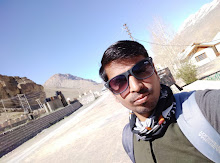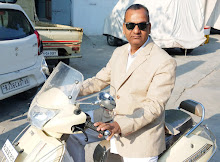Women’s rights are human rights and should be treated as such. To the former President K.R. Narayanan from a speech he made at the government on Liberal Values in New Delhi on January 6, 1996.
It
would be seen that in the evolution of human civilization, economic, cultural,
social, civil and political aspects have come together to produce what are now
called human rights. At the heart of the human rights lie rights and values associated
with the individual human being, which in modern parlance or rather western
parlance, are called liberal values, but which are inherent in every
civilization of the world.’ Recently, the war crimes tribunal at the Hague,
Netherlands a landmark judgement in a case involving three former Bosnian Serb
Commanders declared rape to be a crime against humanity.
The fact that women’s rights need to be
safeguarded in every country of the world cannot be overmphasized. In a
Historic Decision, the Rajasthan Government is changing the service rules to
punish employees who are found guilty of torturing their wives. As reported in
a National Daily, the punishments include suspension and stoppage of
increments.
Duty of the State is to remove inequities in the personal laws of various religions. Recently it has been made compulsory to include the mother’s name along with that of the father in various forms required to be filled for an Indian child while seeking admission in a school and otherwise.
A small step forward in terms of marriage was taken when the Hindu Marriage Act was enacted in 1955. The term Hindu in this case includes Buddhists, Jains, Sikhs and their denominations. Several laws have been enacted including the Child Marriage Restraint Act of 1929 and the Current Special Marriage Act, 1954 that governs civil marriages.
In this Act, for a boy and girl to get married they must have completed 21 and 18 years respectively. Bigamy is prohibited in this Act and each party is expected to give consent to the marriage. For a Civil marriage, three witnesses are necessary. Progressive laws such as these protect the woman.
Under the Islamic Law, marriage is
considered a contract and a ‘nikah’ is performed with several dos and
don’ts. The Parsi Marriage And Divorce Act, 1836, governs the Parsis. The
Christians Marriage Act, 1872, governs Christians and the marriage usually
takes place in a Church.
The report on the Convention on the Elimination of All Forms of Discrimination Against Women (CEDAW) released by the Government recently mentions the steps taken by it to contain the negative impact of restructuring of the economy that India has embarked upon.
“The new economic policies consist of macro-economic stabilization processes aimed at restoring greater fiscal discipline and efficiency, deregulation and delicensing policies aimed at propelling industrial growth… these adjustment processes also hold out considerable challenges for the country, particularly for vulnerable groups, such as poor women, whose interests the market seldom reflects…”
It enumerates the steps that have been taken to protect women. The Government of India made special efforts to increase its support for social sectors and started a number of schemes aimed at the benefiting the poor, particularly poor women and women in the informal sector. These include the Rashtriya Mahila and the Mahila Samakhya Programmes.
The Integrated Child Development Programmes (ICDP) run by the Government is the largest in the world. Government figures show that ICDP has brought down infant mortality rate (MR) from 55.01 in 1970 to 28.02 in 1992 and for female babies from 131 in1978 to 80 in 1992. Life expectancy of women has risen sharply according to the report and stands at 58.1 years, which is higher than that for men at 57.7 years.
Statistically at 58.1 years, which is higher than
that for men at 57.7 years. Statically speaking, at the beginning of the
century, women were not expected to survive beyond 23.96 years. They have
however, still to catch up on the literacy, front, which now stands at 39.29
per cent for women as opposed to 64 per cent for men.
Keeping in line with the Government’s policy on equal opportunity, there are 65 women in senior positions in the Indian Foreign Service around the world. For the first time after Independence the highest post in the Foreign Service, is to be occupied by a female foreign secretary, Chookila Iyer.
It is commendable that despite various hurdles and
mindsets, Government has managed to ensure equal carrier opportunities for women.
The National Literacy Mission through the Total Literacy Campaigns (TLC’s) has played a key role in raising
awareness on issues of gender equity, as have the Women’s Development
Programme, “Mahila Sakhya” and several other Programmes. The National Perspective
Plan for women (1988-2000) was drawn up in 1988 as an important strategy to
change social attitudes.
The Government has taken a number of steps and enacted a number of legislations to protect and safeguard women and ensure that their rights are not abused. One such measure is the Maternity Benefits Act, 1961. Before the enactment of this law, the grant of maternity leave and cash benefits were included in the Factories Act, 1948, Mines Act, 1952 and Bidi and Cigar Workers (Conditions of Employment) Act, 1966 amongst others.
Under the Central Service (Leave) Rules, 1972, “female Government employees are
at present entitled to maternity leave for a period of 135 days from the date
of commencement. During such period, the employee is paid leave salary equal to
the pay drawn immediately before proceeding on leave.” The Government has
therefore, tried to protect women wherever possible. Laws unless enforced,
however, tend to be ignored and abused.
The 73rd and 74th Constitutional Amendment Acts of 1993 mark historic events in the advancement of Indian women as they ensure one-third of total seats for women in all elected offices of local bodies, in rural areas and urban areas.
In the rural areas, above one million women are going to
emerge as leaders/decision makers at the grassroots level and enter public life
through the existing 0.25 million bodies. Of these, about 75,000 will be the
chairpersons of local institutions at the village, block and district levels,
as per the Act.
India still has miles to go to achieve
real women empowerment.
The social, economic, emotional, cultural, civil and political condition of Indian womenfolk had really become miserable in the 19th Century, owing to being kept in seclusion under the cover of ‘Purdah’, denied education, subjects to early marriage and maternity and kept strictly within the four walls of the house and denied freedom under the strict supervision of the men, they had become totally backward.
It was such a pitiable over
all condition of the womenfolk particularly in Sindh and generally in India
that the incorporeal God Father SHIVA
divine descends in 1937 in cognito into the corporeal body of Dada Lekhraj, an
eminent Jeweler and devotee and renamed him as Prajapita Brahma and led the
movement for empowering such downtrodden womenfolk by teaching them all-round
discipline of holy mind, emotion and character and cast them into a powerful
force to shoulder the responsibility of creating a New World Order in the
coming Golden Age based on Purity, Peace & Happiness.
This awakened the leaders and
intellectuals in the country from the utter slumber of their ignorance and
irresponsibility towards virtually half the population and it is how gradually
the movement of human rights particularly of women grew.
You are whole heartedly welcome to
Prajapita Brahma Kumaris Ishwariya Vishwa Vidyalaya







